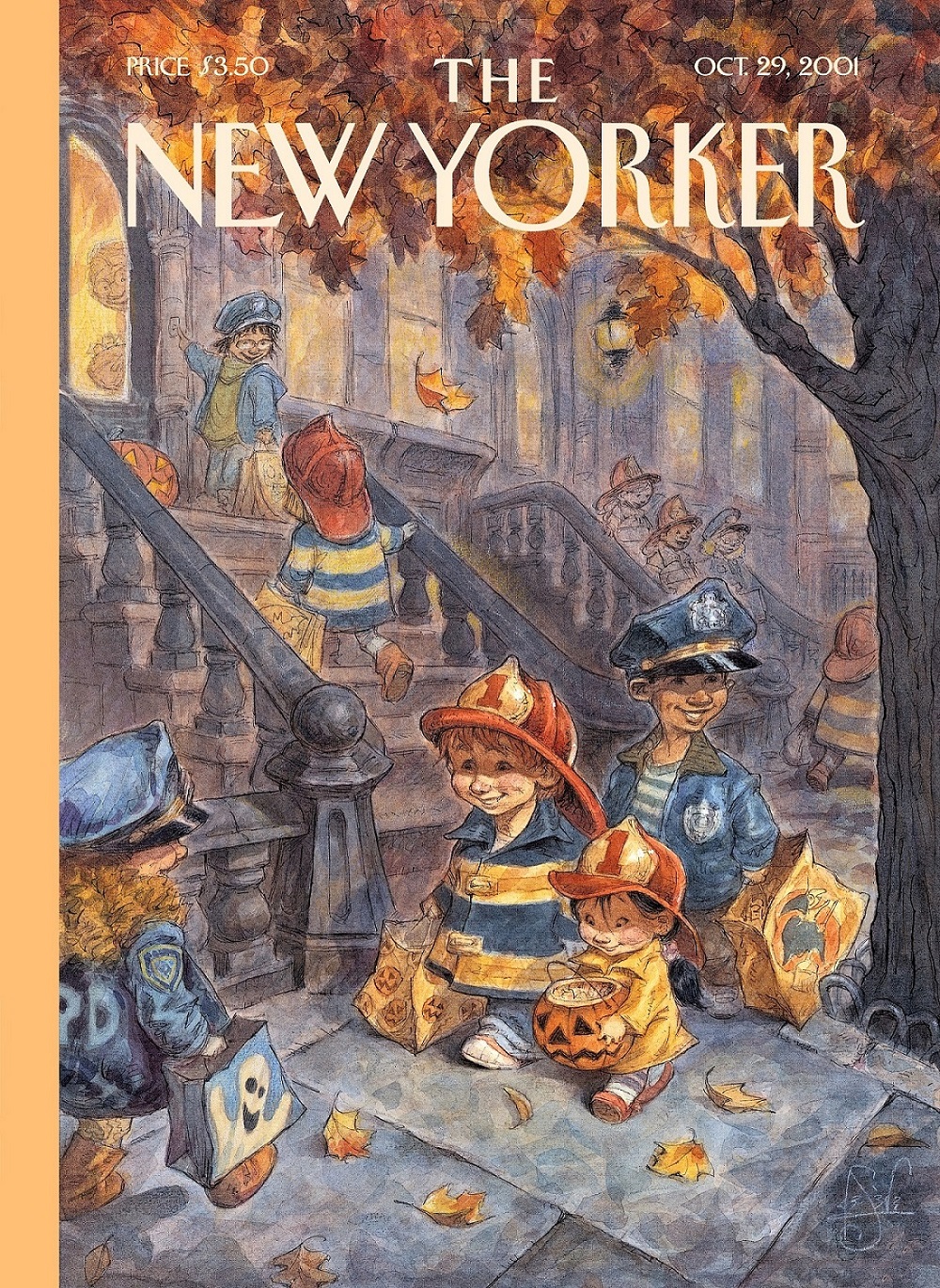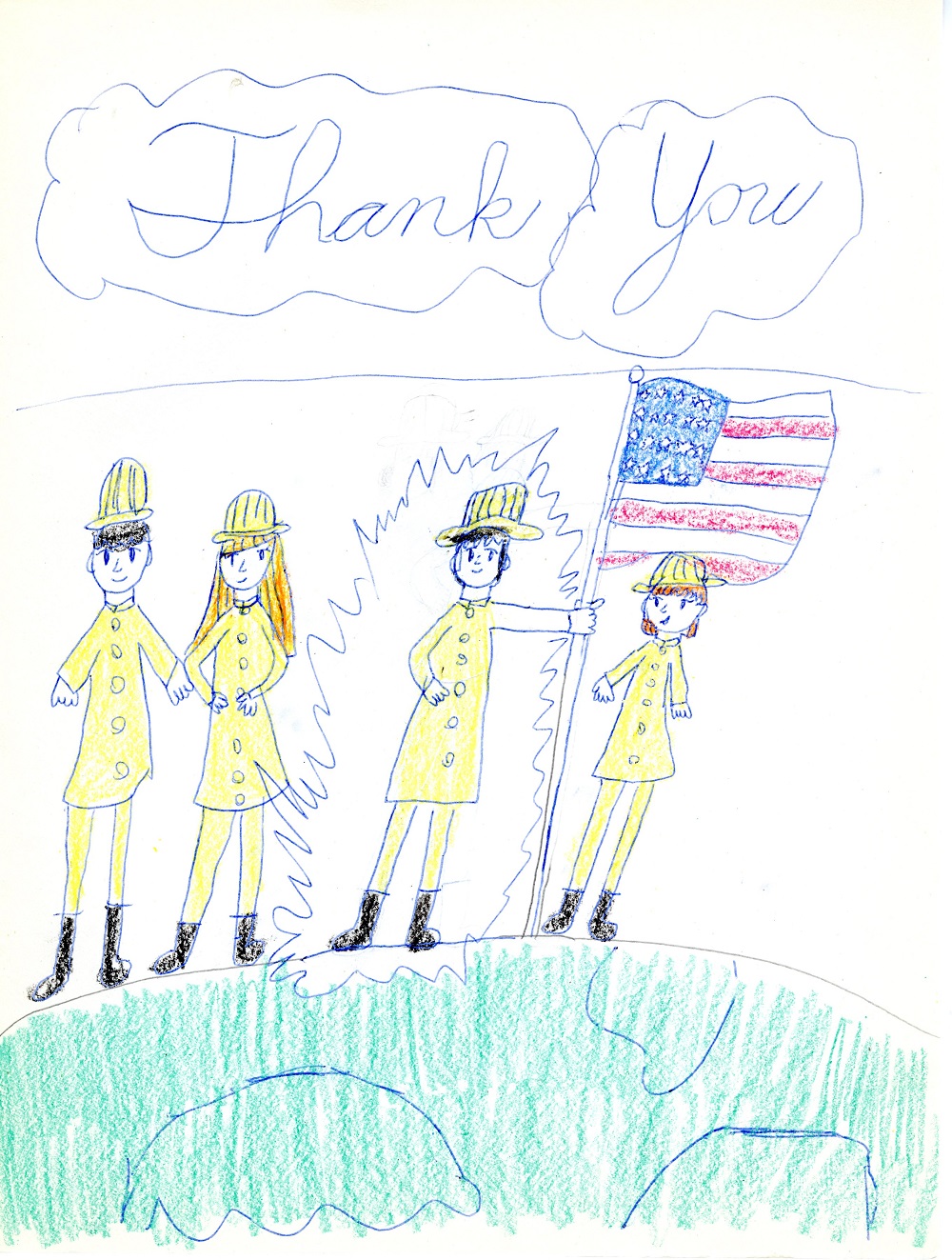Local Heroes
Local Heroes
- Grades 3 to 5
- Lesson Duration: One class period
- Theme: Memorializing 9/11
Essential Question: What is a hero and how can people show gratitude to those who act heroically in their own communities?
Learning Goals
- Students will understand the role of a first responder in an emergency.
- Students will understand that 9/11 is an important historical event that affected people in the United States and around the world.
- Students will explore the concepts of heroism, gratitude, and sympathy.
Vocabulary
First responder: This is a term used for firefighters, police officers, paramedics, and other rescue workers who help people in an emergency.
The New Yorker magazine: This weekly publication provides reporting and commentary on politics, foreign affairs, business, technology, popular culture, and the arts, along with humor, fiction, poetry, and cartoons.

“Local Heroes,” 2001, Peter de Sève, Courtesy of The New Yorker © Condé Nast
Activity
- Display or distribute copies of The New Yorker cover titled “Local Heroes.” Click on the image to use the pinch-and-zoom feature for closer viewing. Do not share the title with students.
- Ask students to look at the cover closely and share what they notice. This can be done as a whole class or in small groups.
- Lead a guided inquiry by asking the following questions, recording their observations on a smartboard or chart paper by category:
- What people do you see on the cover? Who else do you see?
- What time of year does this place? What makes you say that?
- What are the kids doing? What makes you say that?
- Where does this take place? What makes you say that?
- Recap the recorded responses from students. Tell students this cover is connected to 9/11—shorthand for the date September 11, 2001—and that you are going to work together to discover how, based on their observations.
5. Ask: Who can tell me what happened on 9/11?
6. Incorporate the following background information about 9/11 based on the 9/11 Fact Sheet for Early Childhood Students with students as they share their responses. Use the guide Talking to Children about Terrorism for additional information and strategies.
On September 11, 2001, four airplanes were hijacked, or taken over, by 19 terrorists and flown into important buildings. Two planes were flown into the Twin Towers of the World Trade Center in New York City. As people rushed out of the towers, many rushed in to help, including firefighters and police officers, who saved thousands of lives. Almost 3,000 people were killed, including 441 first responders in total.
Ask: What is a first responder?
7. Direct students to look at the cover again. Ask: Who are the children dressed up as for Halloween? Why do you they decided to dress up as first responders for Halloween in October 2001? Tell students that dressing up as first responders for Halloween was one way children showed gratitude, sympathy, and support to first responders in New York City after 9/11.
8. Tell students that soon after 9/11, children from around the world began sending letters and drawings to first responders in New York City. Display or distribute copies of letters and drawings from the “Dear Hero” collection at the 9/11 Memorial & Museum. Ask: Why do you think children from around the world sent these letters and drawings to New York City after 9/11?
9. Return to The New Yorker cover and write the title, “Local Heroes,” on a large sheet of paper or smartboard. Ask the students to define the word “local” and then “hero,” recording their responses below each word. Follow up by asking them to brainstorm a list of “local heroes” in their community and ask the students to share what about the person makes them a hero. This can include first responders as well as other members of the community.
10. After completing the list as a class, tell students they will be creating their own “Dear Hero” letters or artwork for a hero in their community the same way children did for first responders after 9/11. Distribute scrap paper and ask students to brainstorm and sketch ideas. Use one side to brainstorm a picture and the opposite side to write a letter. The class can select one group of people to write letters to (i.e. local firehouse) or each student can pick a person.
11. Distribute a half sheet of white construction paper. Provide art supplies including paint, colored pencils, crayons, or markers for students to color their sketches, along with rulers to assist them in creating lines on which to write their letters. When completed, letters can be mailed, dropped off at a specific location, or displayed in the school as a class project.
12. Conclude by asking: Why is it important to show gratitude and support to those who help others?


